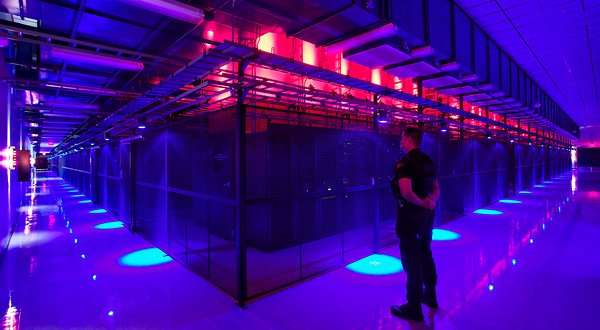Via New York Times
-----

SANTA CLARA, Calif. — Jeff Rothschild’s machines at Facebook had a problem he knew he had to solve immediately. They were about to melt.
The company had been packing a 40-by-60-foot rental space here with
racks of computer servers that were needed to store and process
information from members’ accounts. The electricity pouring into the
computers was overheating Ethernet sockets and other crucial components.
Thinking fast, Mr. Rothschild, the company’s engineering chief, took
some employees on an expedition to buy every fan they could find — “We
cleaned out all of the Walgreens in the area,” he said — to blast cool
air at the equipment and prevent the Web site from going down.
That was in early 2006, when Facebook had a quaint 10 million or so
users and the one main server site. Today, the information generated by
nearly one billion people requires outsize versions of these facilities,
called data centers, with rows and rows of servers spread over hundreds
of thousands of square feet, and all with industrial cooling systems.
They are a mere fraction of the tens of thousands of data centers that
now exist to support the overall explosion of digital information.
Stupendous amounts of data are set in motion each day as, with an
innocuous click or tap, people download movies on iTunes, check credit
card balances through Visa’s Web site, send Yahoo e-mail with files attached, buy products on Amazon, post on Twitter or read newspapers online.
A yearlong examination by The New York Times has revealed that this
foundation of the information industry is sharply at odds with its image
of sleek efficiency and environmental friendliness.
Most data centers, by design, consume vast amounts of energy in an
incongruously wasteful manner, interviews and documents show. Online
companies typically run their facilities at maximum capacity around the
clock, whatever the demand. As a result, data centers can waste 90
percent or more of the electricity they pull off the grid, The Times
found.
To guard against a power failure, they further rely on banks of
generators that emit diesel exhaust. The pollution from data centers has
increasingly been cited by the authorities for violating clean air
regulations, documents show. In Silicon Valley, many data centers appear
on the state government’s Toxic Air Contaminant Inventory, a roster of the area’s top stationary diesel polluters.
Worldwide, the digital warehouses use about 30 billion watts of
electricity, roughly equivalent to the output of 30 nuclear power
plants, according to estimates industry experts compiled for The Times.
Data centers in the United States account for one-quarter to one-third
of that load, the estimates show.
“It’s staggering for most people, even people in the industry, to
understand the numbers, the sheer size of these systems,” said Peter
Gross, who helped design hundreds of data centers. “A single data center
can take more power than a medium-size town.”
Energy efficiency varies widely from company to company. But at the
request of The Times, the consulting firm McKinsey & Company
analyzed energy use by data centers and found that, on average, they
were using only 6 percent to 12 percent of the electricity powering
their servers to perform computations. The rest was essentially used to
keep servers idling and ready in case of a surge in activity that could
slow or crash their operations.
A server is a sort of bulked-up desktop computer, minus a screen and
keyboard, that contains chips to process data. The study sampled about
20,000 servers in about 70 large data centers spanning the commercial
gamut: drug companies, military contractors, banks, media companies and
government agencies.
“This is an industry dirty secret, and no one wants to be the first to
say mea culpa,” said a senior industry executive who asked not to be
identified to protect his company’s reputation. “If we were a
manufacturing industry, we’d be out of business straightaway.”
These physical realities of data are far from the mythology of the
Internet: where lives are lived in the “virtual” world and all manner of
memory is stored in “the cloud.”
The inefficient use of power is largely driven by a symbiotic
relationship between users who demand an instantaneous response to the
click of a mouse and companies that put their business at risk if they
fail to meet that expectation.
Even running electricity at full throttle has not been enough to satisfy
the industry. In addition to generators, most large data centers
contain banks of huge, spinning flywheels or thousands of lead-acid
batteries — many of them similar to automobile batteries — to power the
computers in case of a grid failure as brief as a few hundredths of a
second, an interruption that could crash the servers.
“It’s a waste,” said Dennis P. Symanski, a senior researcher at the Electric Power Research Institute, a nonprofit industry group. “It’s too many insurance policies.”
The full artcile@NY Times

